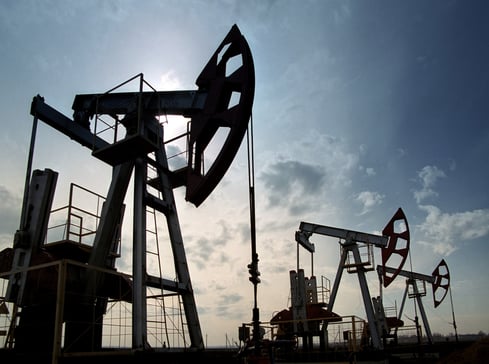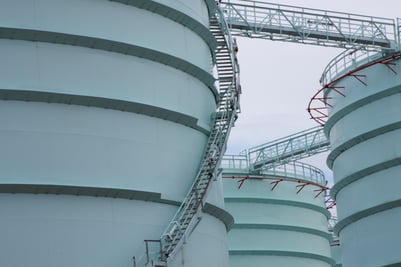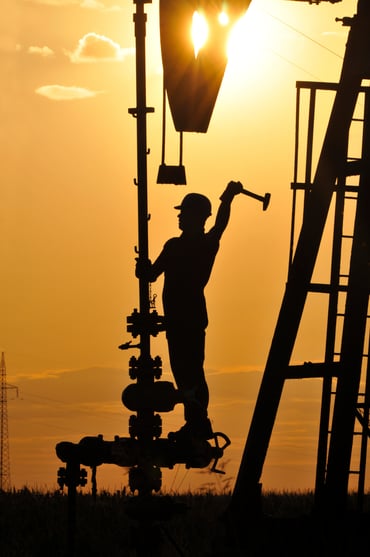Blackline Safety is a technology leader driving innovation in the industrial workforce through IoT (Internet of Things). With connected safety devices and predictive analytics, Blackline enables companies to drive towards zero safety incidents and improved operational performance. Blackline provides wearable devices, personal and area gas monitoring, cloud-connected software and data analytics to meet demanding safety challenges and enhance overall productivity for organizations with coverage in more than 100 countries. Armed with cellular and satellite connectivity, Blackline provides a lifeline to tens of thousands of people, having reported over 200 billion data-points and initiated over seven million emergency alerts. For more information, visit BlacklineSafety.com and connect with us on Facebook, Twitter, LinkedIn and Instagram.
Hydrogen Sulfide (H2S) Exposure in the Oil and Gas Industry: Risks and Prevention
Blackline Safety, Leader in Connected Gas Detection & Lone Worker Safety
May 19, 2021
 On October 26, 2019, a worker and his wife were both fatally injured due to hydrogen sulfide (H2S) exposure at a waterflood station in Odessa, Texas—one of six fatal H2S accidents in the United States in the last two years. On May 4, 2021, the US Chemical and Hazard Investigation Board (CSB) published its final report of the incident with guidance on how future incidents can be prevented with appropriate safety measures.
On October 26, 2019, a worker and his wife were both fatally injured due to hydrogen sulfide (H2S) exposure at a waterflood station in Odessa, Texas—one of six fatal H2S accidents in the United States in the last two years. On May 4, 2021, the US Chemical and Hazard Investigation Board (CSB) published its final report of the incident with guidance on how future incidents can be prevented with appropriate safety measures.
This blog post describes what happened, why H2S safety is a critical concern for the oil and gas industry, and the most recent guidance on how to prevent H2S injuries and fatalities.
What Happened?
The CSB report indicates that the pumper in question arrived at the waterflood station in response to an oil level alarm on a pump at the facility. Common in Texas, a waterflood station uses pumps contained in pumphouses to inject water into the oil reservoir to increase pressure. The water is later removed from the extracted oil; however, the water removed from this process can contain harmful contaminants—like H2S gas. H2S is extremely toxic and can quickly become fatal when high concentrations accumulate in a confined space like a pumphouse.

On the evening of October 26, the employee entered the pumphouse, then closed two valves in an attempt to isolate the alerting pump. He was not wearing a personal monitoring device and did not conduct a lockout to shut the pump off from energy sources before performing the work--critical steps that could potentially have saved his life. Additional risk factors included deficient site security and a non-functioning H2S detection and alarm system in the pumphouse.
At some point, either before or after the worker arrived, the pump automatically turned on, releasing H2S gas into the pumphouse. The enclosed area lacked adequate ventilation, and the gas quickly concentrated to lethal levels, fatally injuring the pumper. Later that evening, his wife, concerned that her husband had not returned home, drove to the site with their two children. She too entered the pumphouse and was also fatally injured by the toxic gas. The children in the vehicle were unharmed.
Why is H2S so Dangerous?
Hydrogen Sulfide (H2S) is very common in oil and gas operations, and is extremely deadly. H2S gas is heavier than air, so it rapidly accumulates in low-lying areas, as well as in confined, poorly ventilated spaces like the pumphouse in the October 2019 incident. While H2S gas can be dangerous even at low concentrations, just a few breaths at high concentrations can lead to unconsciousness, coma, and even death.
“Hydrogen sulfide is one of the leading causes of workplace gas inhalation deaths in the United States. According to the Bureau of Labor Statistics (BLS), hydrogen sulfide caused 60 worker deaths between 2001 and 2010.” There were 6 fatal events in the United States in the past 2 years alone.

While H2S gas produces a recognizable “rotten egg” smell, it is very risky to rely on smell to avoid injury-causing exposure or death. This is
because H2S gas deadens humans’ sense of smell (olfactory desensitization) fairly quickly. In fact, high levels of H2S gas will deaden the sense of smell almost instantly, making smell extremely unreliable for identifying the presence of H2S gas or recognizing increasing levels of H2S.
Visit our H2S Gas Sensor Page to learn more.
Because smell is unreliable, it is absolutely essential to install reliable gas detectors and area monitors in any space where there is a risk of H2S gas. This is similar to the need for carbon monoxide sensors in a home. Workers should also wear personal gas monitoring devices at all times to ensure their breathing zone is safe from H2S. These devices continuously monitor the air the user is breathing and instantly alert them to the presence of H2S gas in their vicinity so they can evacuate and move to safety, avoiding the damaging effects of prolonged exposure to H2S.
As with any critical safety concern, gas detection is essential to sufficiently protect employee health and safety and prevent fatal accidents. Having multiple lines of defense, including overlapping layers of gas detection and monitoring, is needed to mitigate the high level of risk associated with H2S exposure.
To learn more about the dangers of H2S gas, read What You Need to Know About Hydrogen Sulfide.
Preventing H2S Incidents: CSB Guidance
As a result of their investigation, CSB the U.S. Chemical Safety and Hazard Investigation Board made several recommendations to address the risks of H2S exposure and prevent future incidents. These recommendations are:
- Mandate the use of personal H2S detection devices.
- Develop a site-specific, formalized, and comprehensive lockout/tagout program for each facility.
- Commission a comprehensive, independent analysis of each facility to examine ventilation and mitigation systems.
- Develop and demonstrate the use of a safety management program that includes a focus on protecting workers and nonemployees from H2S.
- Ensure that H2S detection and alarm systems are properly maintained and configured and develop site-specific detection and alarm programs and procedures.
- Ensure that H2S detection and alarm systems employ multiple layers of alerts unique to H2S.
- Develop and implement a formal, written, site-specific security program to prevent the unknown and unplanned entrance of nonemployees.
Blackline Safety Is Here to Help
Proper safety protocols and systems are crucial to prevent tragedy. Be aware of the dangers of your worksite. Contact us if you are unsure of the risks for your workers or the requirements for your confined space entries. Our gas monitoring consultants are available to help you protect employee health and safety, while complying with the latest safety regulations.
Get In Touch
Let’s start a discussion about your safety challenges and needs.
Related Blog Posts
Blackline Safety’s G7c Wins Best Innovative Product of the Year
November 29, 2023
Rigorous evaluation by panel of health and safety experts at OSH India sees G7c come out on top {% video_player "embed_player" overrideable=False,...
New Lone Worker Safety Research Recommends Monitoring Technologies to Save Lives
October 20, 2023
NSC whitepaper identifies strategies for protecting lone workers with a case study that features Blackline Safety’s connected safety wearables As...
Is your area gas monitor really detecting the radius you think it is?
September 12, 2023
Five factors to consider that impact coverage, range, and efficacy Even with simple, drop-and-go deployment, gas detection in an industrial...


